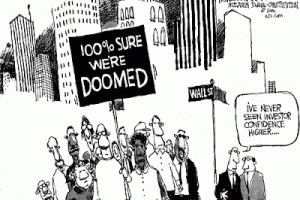Over 100 McDonald’s Workers Arrested Protesting Outside Shareholder Meeting
ThinkProgress
 Fast food workers earn 1,200 times less than CEOs, the widest disparity of any U.S. economic sector. McDonald’s employees make about $8.25 per hour on average before taxes, and the corporation tacitly acknowledges it pays poverty wages. The company drew flak last year for a website that advised its employees to budget by spending nothing on keeping their homes warm, finding a place to live that costs less than $600 a month and spending $20 a month on health insurance.
Fast food workers earn 1,200 times less than CEOs, the widest disparity of any U.S. economic sector. McDonald’s employees make about $8.25 per hour on average before taxes, and the corporation tacitly acknowledges it pays poverty wages. The company drew flak last year for a website that advised its employees to budget by spending nothing on keeping their homes warm, finding a place to live that costs less than $600 a month and spending $20 a month on health insurance.









Spread the word